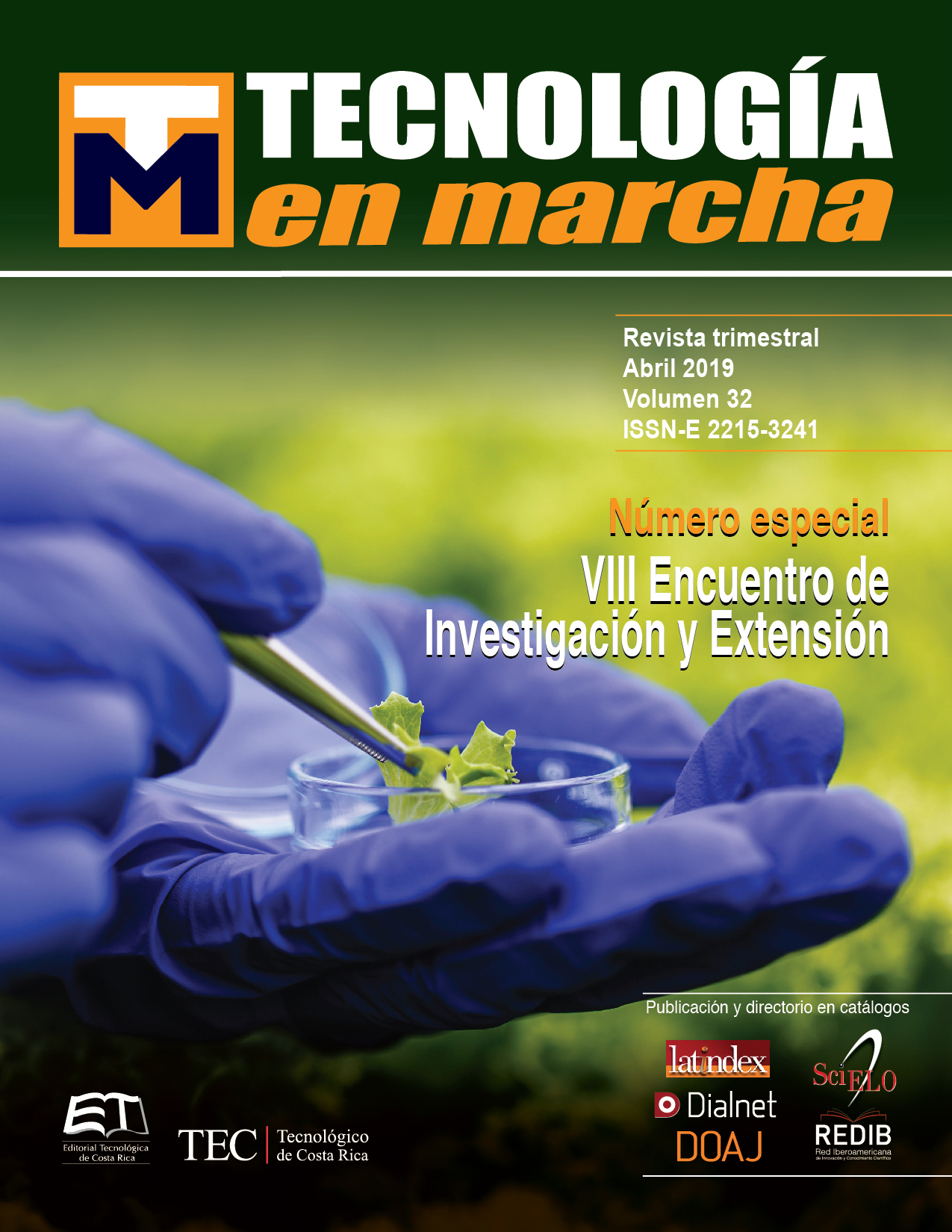Establishment of bioenergy crops as a source of alternative energy, through the development of planting options in three sites in Costa Rica
Main Article Content
Abstract
In Costa Rica, an alternative to the use of fossil fuels is the use of plants with energetic potential; be this the direct biomass produced or the acquisition of fine oils. During the last eight years, a group of interdisciplinary researchers from the state universities of Costa Rica, have been conducting systematic studies on the cultivation of Jatropha curcas (Tempate) for commercial use as a source of oil to produce biodiesel; parallel since 2017 work with other species with bioenergy potential started, using castor bean (Ricinus comunis) and coyol (Acrocomia aculeata), among others. The research covers three objectives, first to establish crops of these species in different bioclimatic zones around the country, along with alternative systematic trials with (tempate, castor and coyol), in combination with food crops and animal feed. The second objective is focused on offering more productive and less toxic varieties of tempate (Jatropha curcas). And the last objective deals with technology and information transfer to the productive sector. The information obtained will allow new options to farmers and aid them to minimize the impact of climate change on their activities, as well as to contribute to the goals Costa Rica has proposed to reduce the emission and improve the quality of life of the Costa Rican population
Article Details
Los autores conservan los derechos de autor y ceden a la revista el derecho de la primera publicación y pueda editarlo, reproducirlo, distribuirlo, exhibirlo y comunicarlo en el país y en el extranjero mediante medios impresos y electrónicos. Asimismo, asumen el compromiso sobre cualquier litigio o reclamación relacionada con derechos de propiedad intelectual, exonerando de responsabilidad a la Editorial Tecnológica de Costa Rica. Además, se establece que los autores pueden realizar otros acuerdos contractuales independientes y adicionales para la distribución no exclusiva de la versión del artículo publicado en esta revista (p. ej., incluirlo en un repositorio institucional o publicarlo en un libro) siempre que indiquen claramente que el trabajo se publicó por primera vez en esta revista.

